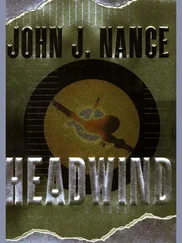“Is all the plowing complete? At least whatever they’re going to do?”
“I think they’re bringing the plows in now. They gave up on all but Runway Seven almost an hour ago.”
Scott watched as the huge fire truck crunched resolutely through the fresh powder, negotiating several turns onto now-abandoned taxiways on the way to the southernmost east-west runway. For some unfathomable reason, Scott’s eyes fixated on a pair of fresh tire tracks leading off to the north as they passed the end of Runway 34R. The tracks immediately disappeared into the whiteness, heading off in the rough direction of where the approach end of the closed runway should be.
Scott turned to the young firefighter. “Do they send airport cars and trucks around checking on all parts of the airfield on a night like this?”
He shook his head. “No, sir. When they abandon an area to a major snowfall, they turn off the runway lights and kind of keep it what I would call sterile. What you’re seeing now is an all-but-shuttered airport.”
The taxiway along the only remaining runway at Denver International was ahead of them now, but the visibility through the blowing curtains of snow was less than a few hundred feet.
“All units, the flight is ten minutes out for Runway Seven. Engine Three, you’re on the eastern end, but stay back on the north edge of the parallel taxiway, and be prepared to go into the ravine at the east end if necessary.”
“Ravine?” Scott asked.
Josh handed back a map, his finger on the dropoff from the eastern end.
“Too bad they didn’t keep the sixteen thousand foot runway open. You roll off the end of that, all you’re going to tear up are prairie dog towns and a few fences.”
Seven Months before — January 21 st
Regal 12
With the good news that the conga line of snow plows was now off the runway, Denver Approach passed the unwelcome information that the visibility conditions for Runway 7 were now well below legal minimums and hovering at 300 feet.
“Denver, we’re going to make this a Category 3B approach,” Marty replied, referring to the high-precision approach procedure that would let a crew fly to fifty feet above the concrete before seeing the runway and landing.
“Regal, that runway is not certified for a Cat-3.”
“We have no choice, Denver. Please ask tower to turn up all the lights to the highest step but be ready to bring them down if we ask at the last minute.”
“Roger, Twelve. Turn right now to zero four five degrees, intercept the localizer at seven thousand, and you’re cleared for the approach. Tower is coming up this frequency so just stay with me.”
Mountaineer 2612
Living with the seismic bouncing of the Beech fuselage and the occasion screech of torn metal was becoming familiar, or perhaps she was just going numb. Michelle kept forward pressure on the control yoke and had become used to her feet on the rudder pedals as they vibrated and shook, the still-intact rudder of the regional aircraft’s fuselage being battered by the roiled airflow over the 757’s wing.
There was something new, however, and she had tried to convince herself that it was just hypersensitivity… but it was real. Almost a rotating moment, as if the aircraft was trying to rotate left just a bit.
As an almost unconscious remedy Michelle held her feet firmly on the vibrating rudder pedals.
With no warning a deafening screech was accompanied by a severe swing to the left, and in the space of a split second Michelle realized the Beech had lost the connection of torn metal to torn metal on the left side, and was now being held on by only the main gear strut on the right. She jammed her right foot on the right rudder pedal instantly, meeting the rotating force with a counter rotation back to the right, and realized with a sinking feeling that she was now reduced to flying the wreckage of her plane to stay on the wing.
“What was that?” Luke asked, his voice squeezed by fear.
“I’m… hard right rudder, Luke. Get your feet down there… feel it with me.”
“I don’t understand!” he answered, wide-eyed.
“Only thing holding us now is the right gear strut and holding her straight with the rudder. Nose down on the elevator, full right rudder. Help me, Luke! Keep flying her… we have to keep her attached.”
Luke felt for the rudder pedals on the right, feeling the right pedal severely displace. He could feel Michelle literally flying the fuselage nose down, and now nose right, in a continuously desperate attempt to hang on.
How long, he wondered, before the strut failed and they were in free fall?
Of course, if that happened, both of them would try to fly it all the way to the ground, but it would be no use, and suddenly, that exact fate seemed inevitable.
Cockpit — Regal 12
Ryan was shifting in his seat, his hand waving slightly for Marty’s attention.
“Yeah?”
“We’re down to two thousand five hundred pounds in the center tank,” Ryan said.
“Understood. But she’ll automatically start feeding both engines from the left tank when we run dry, correct?”
“Yes, the way I have it set up.”
‘Okay. Let’s keep the landing lights off until the last second. I’ll call for them if I need them. Here we go,” Marty said. “I’m going to hold the gear until one mile out. You concur?”
“I do.”
Marty had pulled into position the clear slab of blue-green glass called a combiner, adjusting it in front of his eyes. The so-called heads-up display allowed a pilot to focus outside and essentially have the airspeed and altitude and instrument landing system information all projected on the glass as if it were parading across the distant horizon. The HUD had become the essential piece of equipment for landing in near zero-zero conditions.
“The combiner is working perfectly, Ryan, but I’m changing the normal procedure.”
“Okay.”
“Below two hundred feet I want your eyes out, too. Call a go around if we’re dangerously misaligned, otherwise just… help make sure we can see the concrete.”
“Wilco.”
“Lowering the gear shouldn’t change the pitch in any way. I’m holding two hundred thirty knots and I’m planning to just barely flare to keep the sink rate from being excessive. I’m also going to duck under the glide slope by one dot to get us on the runway as close to the approach end as possible.”
“Marty, we’re seven miles out, two miles from glide slope intercept.”
“Roger. I’ll start down… one dot low.”
“Did we tell the other captain we’re landing?” Ryan asked.
“She knows. She can feel it.”
The approach controller’s voice cut the silence.
“Regal, we show you one mile from intercept,”
“Roger,” Ryan replied. “And you said cleared approach?”
“Yes, sir,” the approach controller replied, “…and the tower has cleared you to land.”
Marty took a deep breath and tried his best to concentrate. Something that had been bothering him was now raising the hairs on the back of his neck. Whatever it was, it was something overlooked, or something they hadn’t considered — but definitely the sort of thing he would be called to account for. He tried again to push the rising feeling out of his mind, but it kept circling his consciousness, like a defiant horsefly.
“Glide slope intercept, one dot low,” Ryan intoned. Marty had pulled the thrust levers back slightly, watching the airspeed with laser-like intensity as they started exchanging altitude for reduced power to keep the same speed.
“Should we ask for the current RVR?” Ryan asked.
Читать дальше












